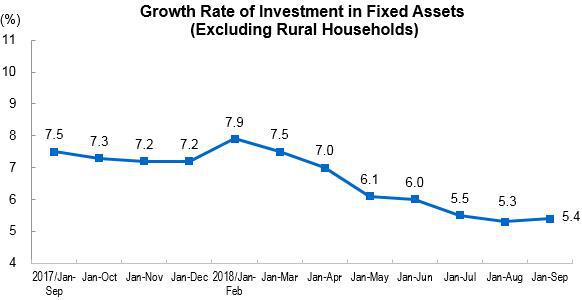Contents:


In the above example, Marriott has granted 2.8 million RSUs to certain key officers and employees. The vesting period of these units is 4 years in equal annual installments. The report also mentions how the compensation expense will be recognized in the income statement.
If the Company buys back the shares, they are treated similarly to the shares issued, but on the opposite, the shares are reduced from the calculation. Thus, the weighted average number of shares outstanding has also doubled by doing a stock split. Thus, the weighted average shares outstanding in this case, the Company has 112,000 shares outstanding at the end of the year. Thus, the weighted average shares outstanding in this case, the Company has 109,000 shares outstanding at the end of the year.
How to Calculate Common Stock Outstanding From a Balance Sheet
Accountants use the shares outstanding to help calculate the earnings per share on financial statements. An outstanding Share is an important number closely tracked by investors and analysts following various companies. It impacts the earnings available to common shareholders of the company and the free float of shares in the market. In addition, it keeps changing depending upon the company’s new issuance, buyback, or conversion of warrants and other convertible Bonds into common equity.
RSUs are not converted into shares until they reach the specified price. « Weighted average determination of the number of shares outstanding. »New York Certified Public Accountant, Vol. Profit Must is being built by a passionate team with in-depth understanding of the IPO sector and stock market.
In the second 6-month period, the company’s number of shares outstanding is 150,000. Instead, the weighted average incorporates changes in the number of outstanding shares over a certain period of time. Next, you’ll want to look for the common stock line item on the company’s balance sheet. Common stock is the main class of stock that the company issues to investors. Investors who hold common stock exercise control by being able to vote on corporate policy and electing the company’s board of directors. The balance sheet is a financial statement issued by the company that provides a full accounting of the company’s assets, liabilities, and shareholder’s equity at a particular moment in time.
The scope of “Shares Outstanding”
https://1investing.in/ stock units are a type of equity compensation provided to employees to reward good performance and/or for completing a specified tenure with a company. Unlike regular stock options , RSUs do not have a strike price but vest upon meeting specific performance criteria ‘Performance Stock Units’ or completing a pre-specified tenure ‘Restricted Stock Units’. The P/E ratio is calculated by dividing the stock price by the latest 12 months’ earnings. The below table shows the weighted averages shares outstanding calculation in a tabular format. When finding stocks that show constant earnings per share growth, you will realize that they have a high stock beta.

For example, a company might authorize 10 million shares to be created for its IPO, but end up actually only issuing nine million of the shares. Conversely, the outstanding number of shares will decrease if the company buys back some of its issued shares through a share repurchase program. Please don’t confuse shares outstanding with authorized stock and issued stock as they are completely different, and shares outstanding is a subset of both authorized stock and issued stock. Floating stockis a narrower way of analyzing a company’s stock by shares. It excludes closely held shares, which are stock shares held by company insiders or controlling investors.
Outstanding Shares
The diluted shares are calculated by taking into account the effect of employee stock awards, options, convertible securities, etc. As a real-world example, here is some information from Johnson & Johnson’s 2014 year-end balance sheet. The company has 4.32 billion authorized common shares, of which 3,119,843,000 have been issued as of December 31, 2014. Let us consider an example of a company named KLX Inc. in order to illustrate the computation of shares outstanding. During 2018, the company repurchased 0.3 million common stocks and 0.1 million preferred stocks. Based on the given information, Calculate the number of shares outstanding of the company.

There are a number of different types of stocks that companies issue. If you’re a market beginner, learning the ins and outs of stocks will help you get started trading, and making money. Read on to learn how to calculate outstanding shares so you can begin mastering the market. Alternatively, you can calculate the weighted average of outstanding shares. Calculate the number of new shares issued in the stock dividend by multiplying the percentage of the dividend by the number of shares outstanding. For example, if the company has 300,000 shares outstanding and grants a 2 percent stock dividend, multiply 300,000 by 0.02 to find that 6,000 new shares have been issued.
Add the Preferred and Common Stock, Then Subtract the Treasury Shares
Investors typically compare the EPS of two or more companies within the same industry to get a sense of how one company is performing relative to its peers. Earnings per share demonstrates earnings stability as well as the earnings trend, when compared over various quarter or years. Ariel Courage is an experienced editor, researcher, and former fact-checker. She has performed editing and fact-checking work for several leading finance publications, including The Motley Fool and Passport to Wall Street. SUP is a complete startup formation toolkit, including your own legal portal, automated document generation, our proprietary cap tables, and SUP Academy, our exclusive online learning curriculum. And it’s all backed by an experienced venture law firm, O&A, P.C.
In other words, the balance sheet is a snapshot of what a company owns, what it owes, and the total amount that has been invested by shareholders. A business has 100,000 shares outstanding at the beginning of January. It then issues 40,000 shares at the beginning of February, and 20,000 shares at the beginning of March. By the end of March, the total shares outstanding figure is 160,000.
Estimating The Fair Value Of Westinghouse Air Brake Technologies Corporation (NYSE:WAB) – Simply Wall St
Estimating The Fair Value Of Westinghouse Air Brake Technologies Corporation (NYSE:WAB).
Posted: Wed, 12 Apr 2023 17:09:00 GMT [source]
The number of shares outstanding is not hard to calculate, but you should not underestimate the importance of this figure. Common stock outstanding is the basis for determining which investors have the most votes and thus the largest influence at stockholders’ meetings. While outstanding shares of stock are those that can be purchased or sold on the secondary market, treasury shares are those that are held by the company and are not available in the open market. The total number of issued shares is the sum of the outstanding shares and the treasury shares. It simply implies the number of shares issued and outstanding as of date. These are the number of shares held by shareholders and are actively tradable without any restrictions in the form of lock-in or anything else.
If a large number of people want to buy these shares, and the supply is limited, the price will rise. In such a case, all the previous shares in the Company are multiplied by 2. This is because the value of the shares is the same before and after the stock split. The nifty levered free cash flow calculator helps you determine the company’s remaining money from operations after capital expenditures and repaying mandatory debt. EPS is a metric which is often used for benchmarking a stocks performance relative to other similar stocks.
- If not, divide the dollar amount listed under the heading « Capital Stock » by the stock’s par value.
- Another way of making money in the stock market is by buying call or put options.
- In addition, it keeps changing depending upon the company’s new issuance, buyback, or conversion of warrants and other convertible Bonds into common equity.
- Outstanding shares represent the number of a company’s shares that are traded on the secondary market and, therefore, are available to investors.
- The number of shares outstanding will increase if a company undertakes a stock split, or will reduce if it undertakes a reverse stock split.
The number of outstanding shares of common stock fluctuates frequently, increasing when companies issue additional shares to raise cash, initiate a stock split, or when employees exercise stock options. Total outstanding shares decrease if there is a reverse stock split or when a company buys back outstanding shares of its own stock. Investors purchase the stock and thus become part owners of the company. As the company’s worth increases, each share of stock value also increases, and the investor can make money by reselling the stock. The number of shares of stock sold, minus the shares the company buys itself–which are called treasury shares–comprise the shares outstanding.
On the balance sheet, there is a line item description that states the number of shares outstanding. However, unlike options, a key difference is the strike price is 0. In the case of RSUs, the strike price is the same as the share price.
If earnings are predicted to rise, the estimated share price will rise even more. The new market price is determined by the price at which the stock was bought. People, on the other hand, are frequently puzzled as to how to calculate share price.
MedAvail Reports Fourth Quarter and Full-Year 2022 Financial Results – Marketscreener.com
MedAvail Reports Fourth Quarter and Full-Year 2022 Financial Results.
Posted: Thu, 13 Apr 2023 20:06:20 GMT [source]
accounting equation shareholders also have priority over common shareholders if the company goes bankrupt and its assets are liquidated. Employee stock options, shares, and restricted share units are subject to a vesting period, typically between two and five years. Since some employees will quit before their shares vest, companies typically make an estimate, based on judgment, about forfeitures and the total number that will actually vest. Use the formula « Earnings per share equals net income divided by shares outstanding » to calculate the shares outstanding. Divide the net income by the earnings per share to determine the number of shares outstanding. Basic EPS uses outstanding shares, which are actually held by the public and company insiders.
À propos de l’auteur